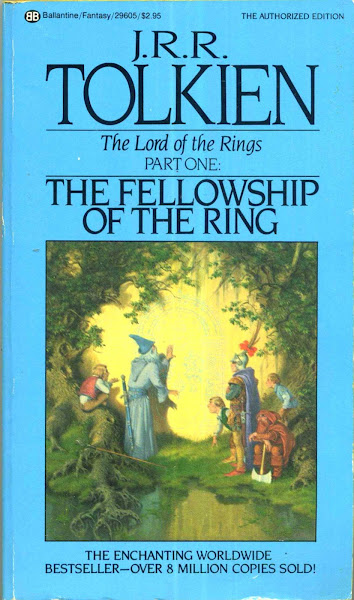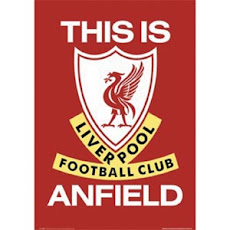L-R: Firman Utina, Bambang Pamungkas & Muhammad Roby.
This appears in the Tuesday December 28, 2010 edition of the Business Mirror.
This appears in the Tuesday December 28, 2010 edition of the Business Mirror.
Garuda on my chest.
by rick olivares
“Garuda, di dadaku. Garuda kebanggaanku. Kuyakin, hari ini pasti menang!”
To wear the national colors is an honor they say. But for the Merah Putih, it isn’t only a source of pride. There’s so much more riding on their shoulders.
Timnas (Tim Nasional) is the symbol of hope in a country of 235 million people. In a few short weeks, they have united the country (even those who have jumped on the bandwagon) that has been routinely torn apart by political struggles and daily battles with corruption. Now does that sound familiar, Philippines?
Indonesia is a former Dutch colony yet they fancy themselves as the English Premier League of Southeast Asia. The national team, prior to the 2010 Suzuki Cup, has been viewed as a bunch of underachieving primadonnas. But on the cusp of its first international trophy since 1991, they have been given some latitude in terms of their attitude. The players have bought into Alfred Riedl’s system. But for how long more so now that they lost the first leg to a suddenly sharp Malaysian team 3-nil.
There has been much debate on whether the strategy of the Persatuan Sepakbola Seluruh Indonesia (or PSSI the Football Association of Indonesia) of naturalization of Cristian Gonzales, an Uruguayan national, and Dutchman in Irfan Bachdim. Does their inclusion mean that the local talents aren’t good enough that they need to beef up their roster with a pair of recruits not to mention having two Austrians on their coaching staff? And there are at least five more Indonesian-Dutchmen ready to wear the red and white at anytime.
The PSSI has seen the success of its former European colonizer, the Netherlands, in the last World Cup where Bert Van Marwijk’s squad had three players of mixed race in Ibrahim Afellay (who is half Morocaan and plays the midfield for FC Barcelona), Gregory Van Der Weil (the Ajax Amsterdam defender whose family hails from Curacao that is off Venezulean), and Hedwiges Martinez-Maduro (the Valencia defender whose father is from Aruba). Like Spain, the Dutch finally cracked the finals. The two countries have for decades produced some of the best footballing talent but when playing for flag and country, they never went anywhere that is until the last two years when Spain became European and World champions.
The triumph of Spain is because of their grassroots development and the style of one-touch passing with tight triangles formed in each attack that leads to possession and support. But their current set up is a powder keg with several key players of Catalan origin.
With the Catalan region making noises after South Africa that it would still pursue independence from Spain the national team is possibly on the brink of disarray.
PSSI may also want to take a close look at what is going on with France who were also World Cup (1998) and European champions (2000). The Les Bleus U-19 team are the European champions yet the grassroots development has seen a different generation of players who ultimately shamed France in the World Cup in South Africa.
Alain Finkielkraut, a French essayist and professor at Ecole Polytechnique in Paris, has been controversial for his brutally frank comments about the state of French football. It was he who described the 2006 edition of Les Bleus as “black, black, and black.” It was a departure from the “black, blanc, and beur” (black, white, and Arab) description that was hung on the 1998 World Cup champions who were a perfect example of the country’s multiracial image.
After the fallout of the 2010 World Cup, Finkielkraut said that France had morphed “from the Zidane generation to the scum generation.” Those words ignited a firestorm of controversy and it once more put the essayist on the defensive who claimed that he was referring to the “me-first” attitude of a the new immigrant population.
Naturalization, an offshoot of globalization, is here to stay. It is hard to claim that one country is pure in its aims or even in its football team. Malaysia itself is a hodge podge of ethnic lines and cultures.
For Indonesia, the Suzuki Cup and their dreams of an international football trophy, are down to one game. There is concern about those jumping off the bandwagon after seeing the Merah Putih winning all five home matches en route to the finals. There has been widespread concern that naturalization is a set back for the PSSI and a detriment to the homegrown program.
The answers to that are long and are even theoretical. Let politics and policy take a backseat for now.
Suffice to say for Garuda is that when someone puts on that red and white, no matter where they are from, the task at hand is to support the squad whether there is a naturalized player or a player of mixed-lineage on the squad.
“Garuda, di dadaku. Garuda kebanggaanku. Kuyakin, hari ini pasti menang!”
Translated, that means, “Garuda, on my chest. Garuda, my pride. I believe you will win today.”
----------------
For my Indonesian friends Aditya and Val. I've been telling Aditya that I have been a fan of Irfan and Bambang especially the latter. What a footballer! Aditya I met during Liverpool's friendly with Singapore and Val, we became friends while covering Smart Gilas in Jakarta several years ago.
By the way, "Garuda" is a mystical bird in Hindu lore. It is also the symbol not just of the country but Timnas.










Amazing note, especially considering you're a foreigner. We (Indonesians) know very well that there have been too many problems within PSSI and the local league, but we feel helpless and powerless to fix those problems. These problems are the main cause of the underachieving Timnas.
ReplyDeleteBTW, I'm also a big fan of Bambang Pamungkas (we address him as BP or Bepe), but not the way he plays the ball. I'm a big fan of his writing skills. He's such a talented writer, poetic, honest and knows very well how to make the readers get carried away with his writing. Unfortunately he writes only in Indonesian, so I can't share the beauty of his notes with you.
Thanks for sharing this. I hope you don't mind sending some of his stuff over. Maybe I can ask some of my other Indonesian friends to translate it. Thanks again and good luck in the home game.
ReplyDeleteHi Rick! This is a great article, as usual and very informative, especially since it these days, in Indonesia there is a lot of discussion about naturalised players both on our TimNas as well as other national teams, including the Philippines.
ReplyDeleteJust have a small note, however, in terms of naturalisation of players, PSSI (the FA) has only had one player that has been through the PSSI naturalisation process, Kim Jeffrey Kurniawan, who used to have German citizenship due to his mum.
Christian Gonzalez was naturalised separately from the PSSI programme. It was a non-professional choice as his family is Indonesian and he's played in Indonesia for a long time. As for Irfan Bachdim, according to my information, he had the option to declare Indonesian citizenship from age 18, and because he has Indonesian blood from the paternal line and isn't a naturalised player.
It's really different from the Philippines, because there one can have dual-citizenship based on blood or birth. In Indonesia, legally you're meant to declare at the age of 18 if you have an Indonesian and a non-Indonesian parent.
I think the new obsessive focus on this hardly novel phenomenon of naturalising players seriously takes away fro the main issue at hand which is, is the FA capable of providing efficient development programmes for all levels of football? Are they willing to spend the money that is allocated on capital for development academies, stadia and training programmes and not just salaries of the big wigs? With all the scandal surrounding the Indonesian FA, the answer is really "no" at the moment--the ones in charge are more concerned with the numerical bottom line and using their football connections for political gain.
And I know the Philippine FA also has a lot to fix, but am glad to hear that Mr. Araneta has been officially accepted by FIFA as president just recently, hasn't he? That they were brave enough within the FA to remove themselves from Martinez really does show there is a willingness on the football leadership of the Philippines to make a change (hopefully for the better), which is still very much lacking in the PSSI in Jakarta.
www.bambangpamungkas20.com.. look into this site
ReplyDeleteoh yeah and in that picture above there are some mistake, he is not muhammad ridwan he is muhammad roby
ReplyDeleteBepe's latest post : http://bambangpamungkas20.com/bepe/?p=433#more-433
ReplyDeleteThis note has been retweeted hundreds of times in just few hours.
Just like semuabangsa, in one of his previous notes Bepe also criticised PSSI's inability to provide efficient development programmes.
Extra information regarding Indonesia's only naturalised player, Kim Jeffrey Kurniawan: his grandfather was a former soccer player for Persija Jakarta and Indonesian National Team (just like Bepe) in 1950s.